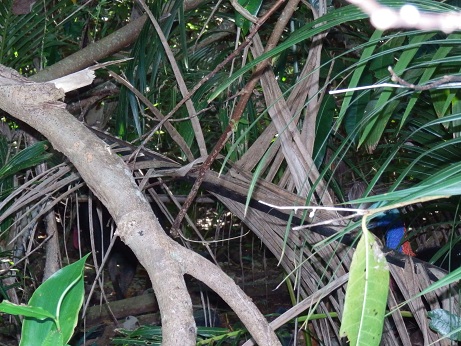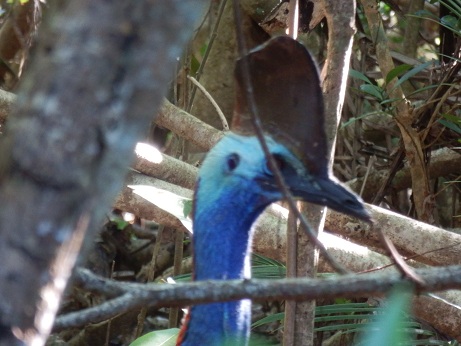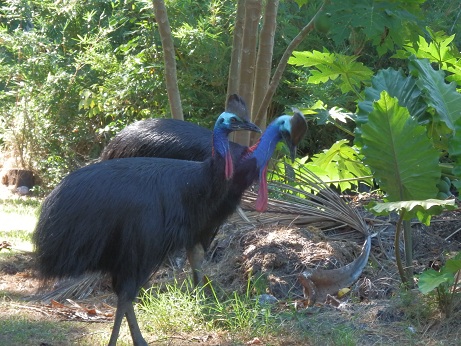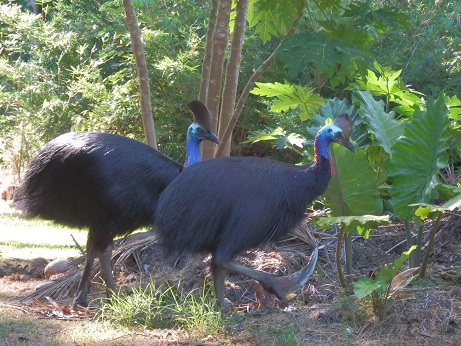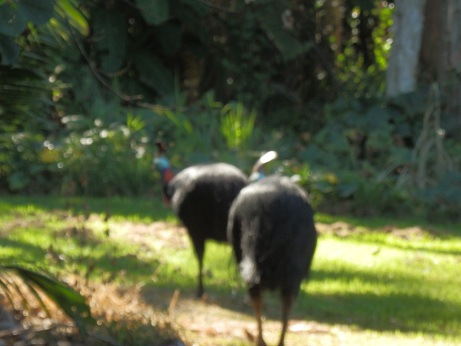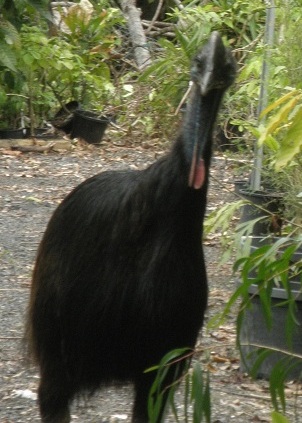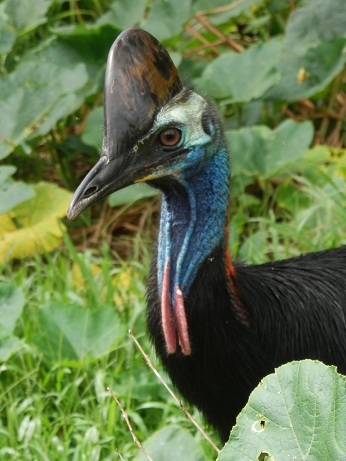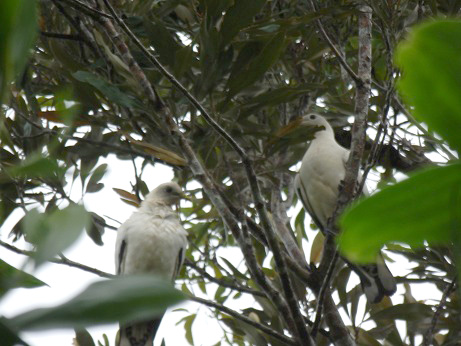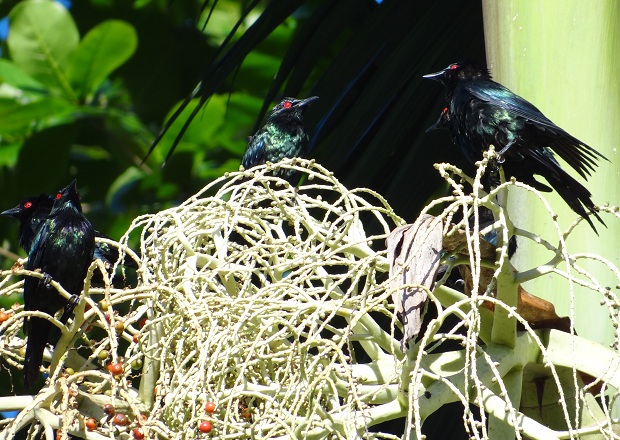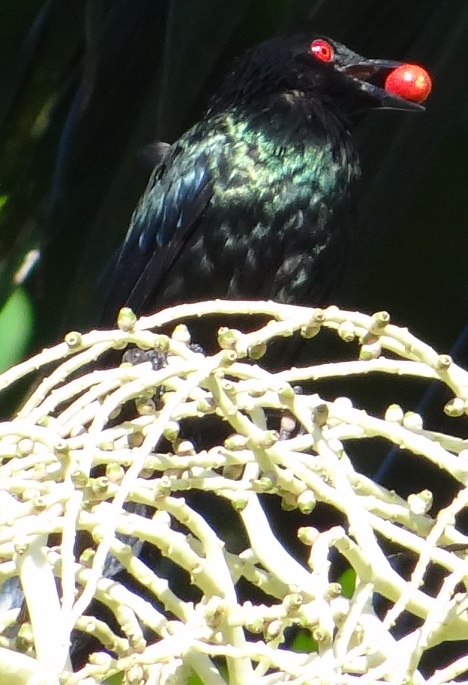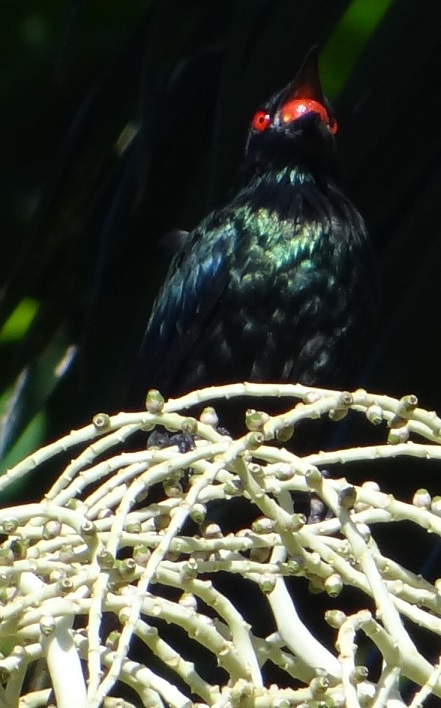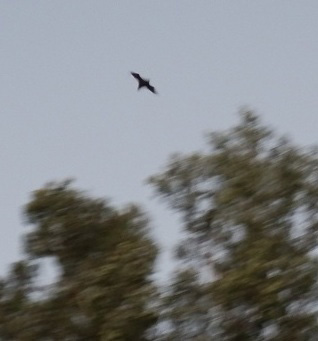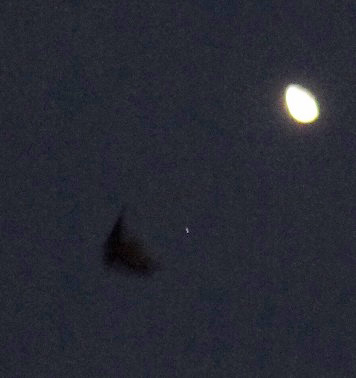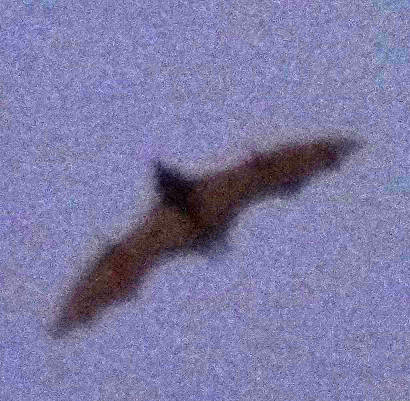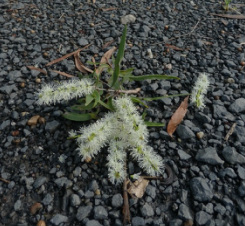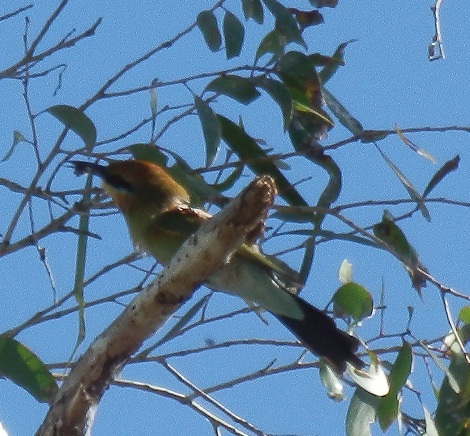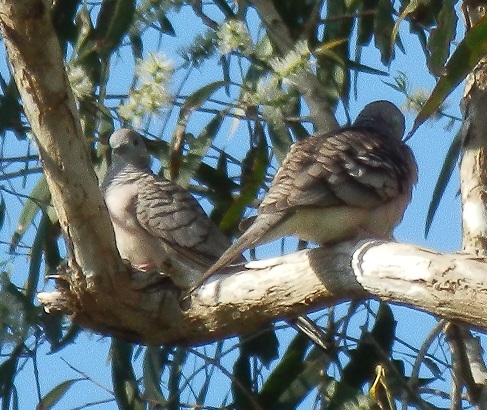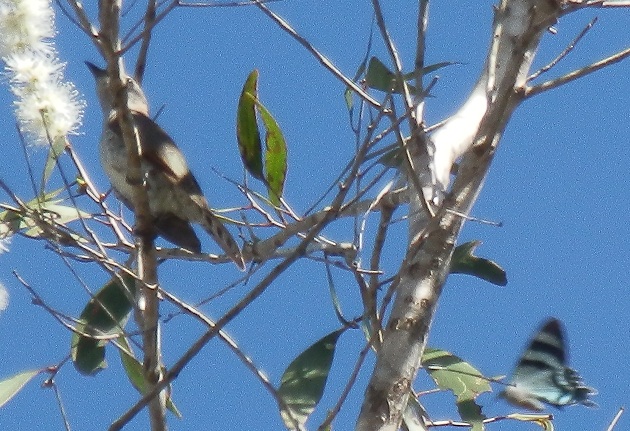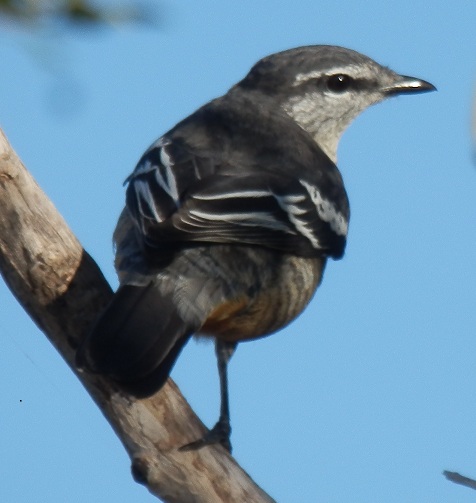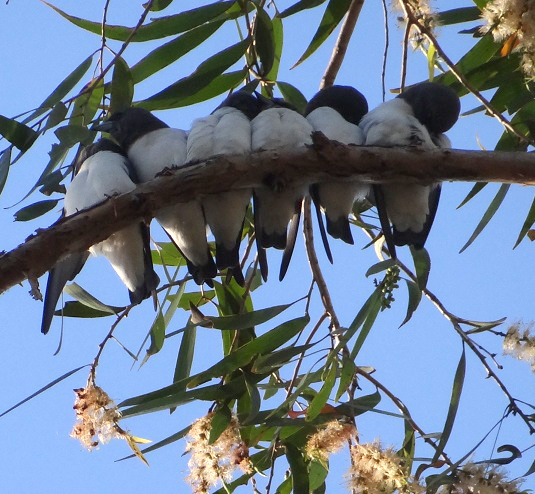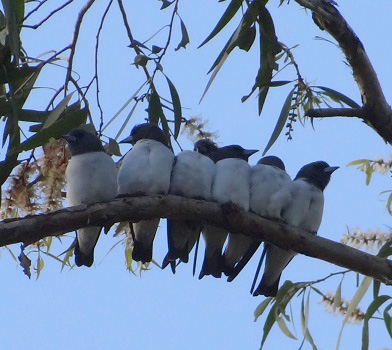Love is in the air at Coquette Point, Jessie the matriarch cassowary of Coquette Point is walking out with ‘Little Dad’. Last Sunday as I was walking along the mangroves I sensed a movement in the leaves, when I looked in the dimness I saw cassowary ‘Little Dad’ sitting among the roots of an hibiscus tiliaceus. Some three metres away I saw another cassowary standing absolutely still. I was unable to identify the bird hidden behind the dense undergrowth and I did not wish to disturb them. |
On Tuesday I was dumping rubbish on my compost heap and 'Jessie’ appeared close by in the mangroves. ‘Little Dad’ stepped out and moved onto the lawn and soon followed by ‘Jessie’. I moved away from the area and watched them. They moved over to where I had dumped the weeds and Jessie all the time with her eyes on ‘Little Dad’. Suddenly they moved off back into the mangroves and I have not seen them since. |
I have not seen the Nutmeg pigeons for over ten days. I miss their cooing and the sound of the wind in their wings as they move in the rainforest canopy. The number of birds that I saw two weeks ago, which coincided with the gale-force winds and heavy rain, may have been an assemblage of pigeons at Coquette Point where they rested and fed for a few days prior to departure to Papua. |
In the sky above the tree wood swallows and rainbow bee-eaters scoop up the insects and fly around and over and through the trees until the heat of the day forces them and the insects to seek shelter. Through the day the tree is visited by peaceful doves, rainbow lorikeets, sunbirds, crested hawks, varied thrillers, starlings and an assortment of moths. |
